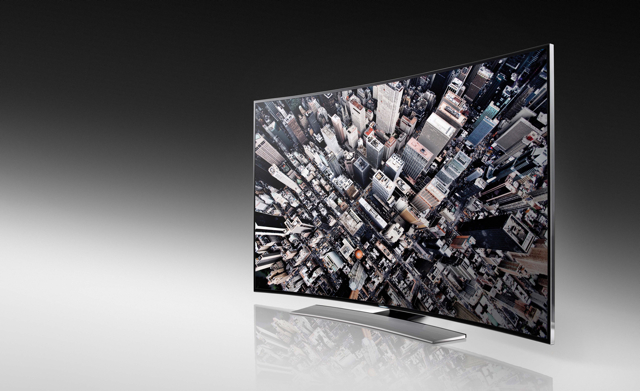Samsung Multi-Link Screen to Spur Contextual Smart TV Apps?
January 7, 2014
In addition to the curved displays and 4K tech touted during Samsung’s press briefing on Sunday, the company also introduced its “Multi-Link Screen” feature, in what could potentially be the first step forward in contextual smart TV apps. Through the new feature, Samsung’s 2014 TVs will essentially allow consumers to view a split screen for perusing Web and YouTube content while still watching live TV. This could lead to social apps, for example, automatically providing related info during broadcasts.
“A Web browser can take over the right half of the screen, launch Microsoft’s Bing search engine, and automatically suggest search queries relevant to what’s playing on the left side,” reports Janko Roettgers for GigaOM. “Similarly, launching YouTube in link-screen mode gives users a split screen with suggested clips that are relevant to what’s on air right now.”
CNET indicates the feature can be used for “four separate windows, each showing different content (live TV, YouTube, a Web page and another app, for example)” for the company’s new high-end LED LCD, the HU9000 (pictured above), billed as the world’s first curved UHD TV. “Lesser 2014 Samsungs get a mere two split-screen windows,” adds CNET.
Perhaps not as polished as “snapped apps” on the Xbox One, and with limited support for third-party apps currently, the feature offers no contextual awareness for now.
“However, the new feature could nonetheless be a first sign of big things to come for smart TVs,” suggests Roettgers. “App developers have long tried to provide some type of context around what people are watching on TV, and many of these efforts have focused on all kinds of awkward workarounds.”
So far social TV apps have led to targeted ads, social chatter and information related to viewed content, but largely on second screens.
“Most of these apps are only capable of identifying which show is playing at any given time, not who actually is on screen or which kinds of topics are being discussed on a news program. That kind of contextual awareness is possible, as TV data startup Boxfish has shown with its experimental but very cool programming guide,” according to Roettgers, who notes that Samsung’s feature marks the first time a major manufacturer has embraced “contextual content on screen during live TV broadcasts.”
“Imagine, for example, a Twitter sidebar that automatically displays relevant information to the current sports game, or a live feed of Instagram or Flickr images as a major news event unfolds. Giving smart TV app developers access to contextual information around live TV could enable a whole new wave of innovation, and possibly even help both worlds to grow closer together.”


No Comments Yet
You can be the first to comment!
Leave a comment
You must be logged in to post a comment.